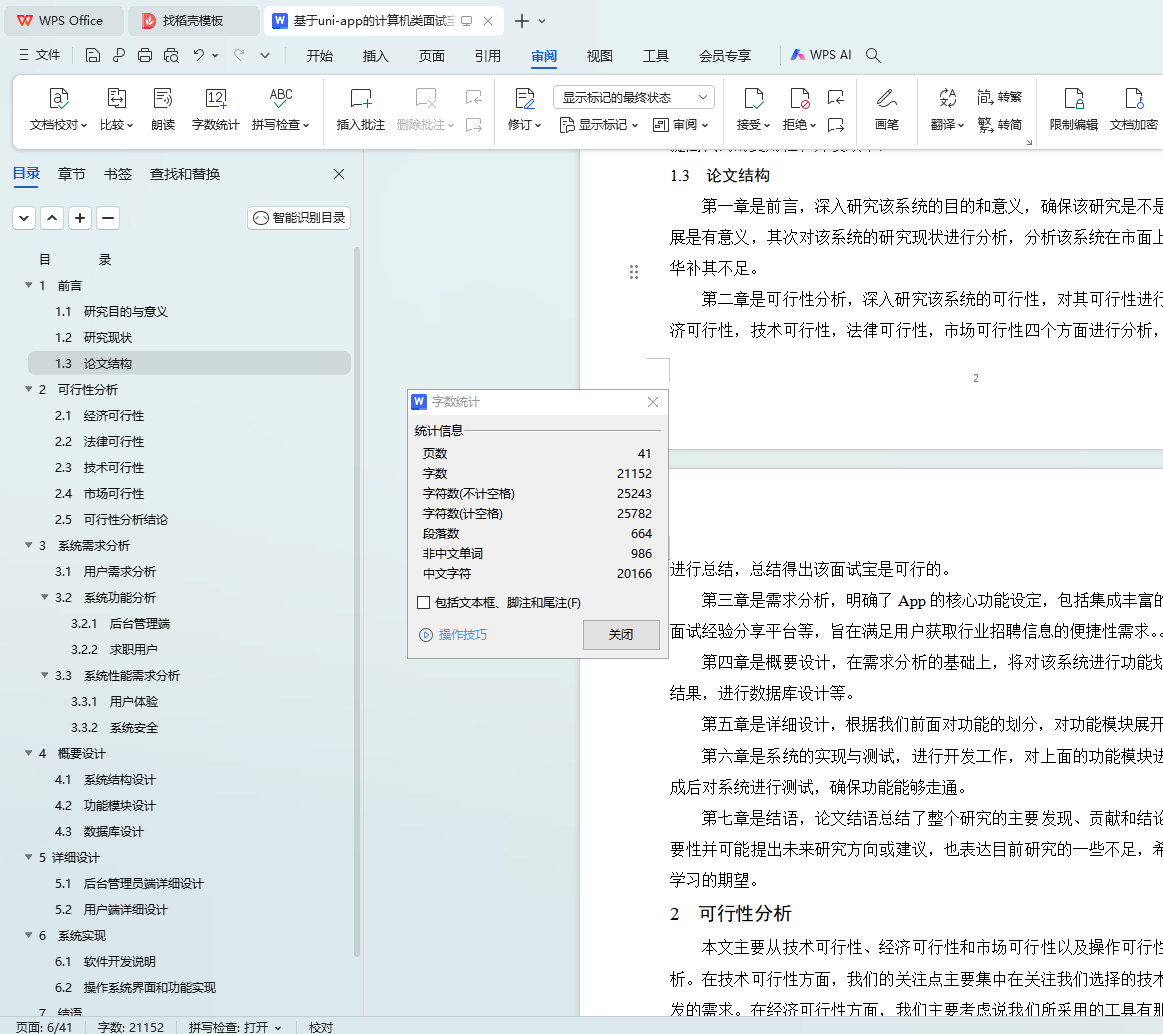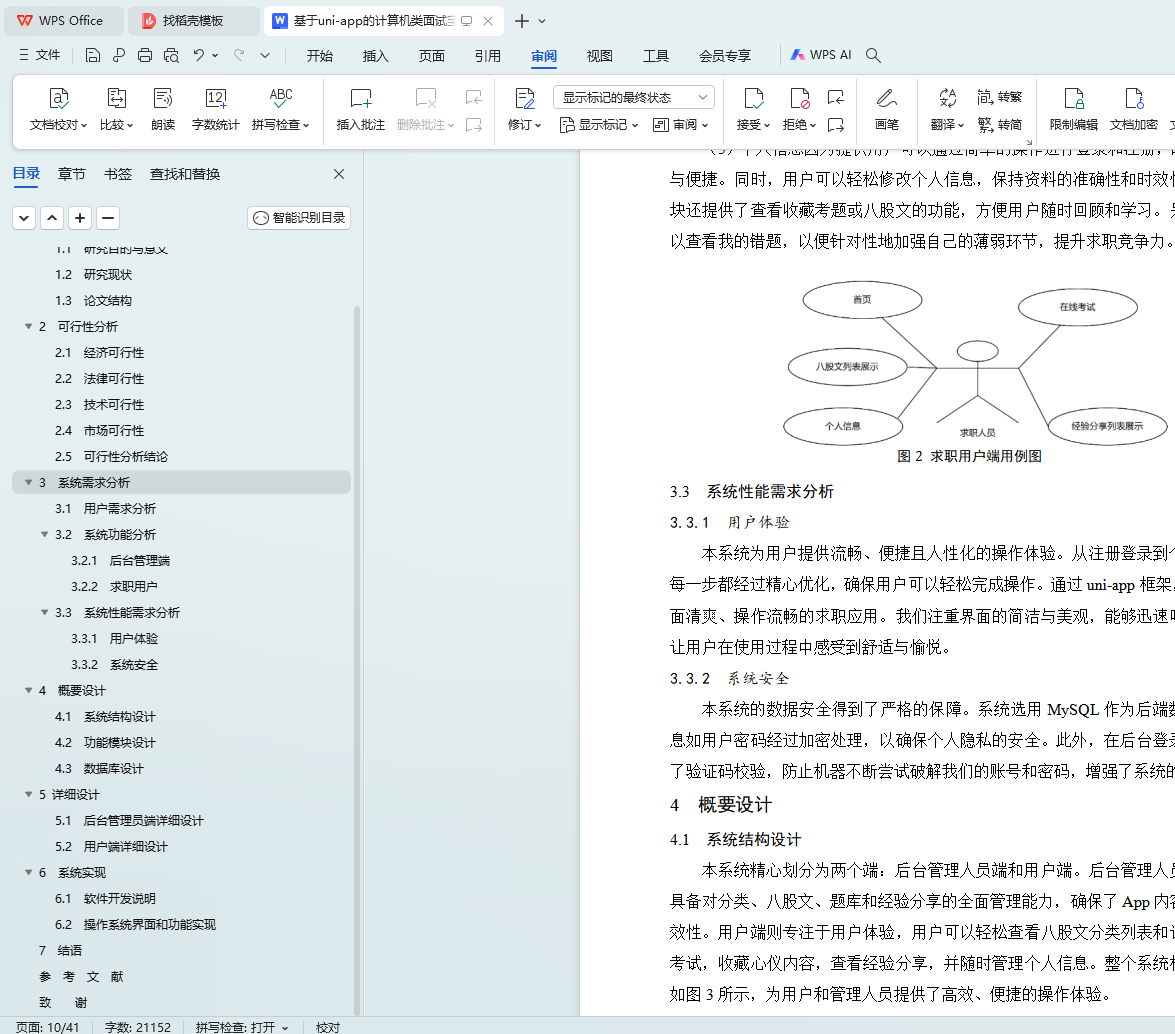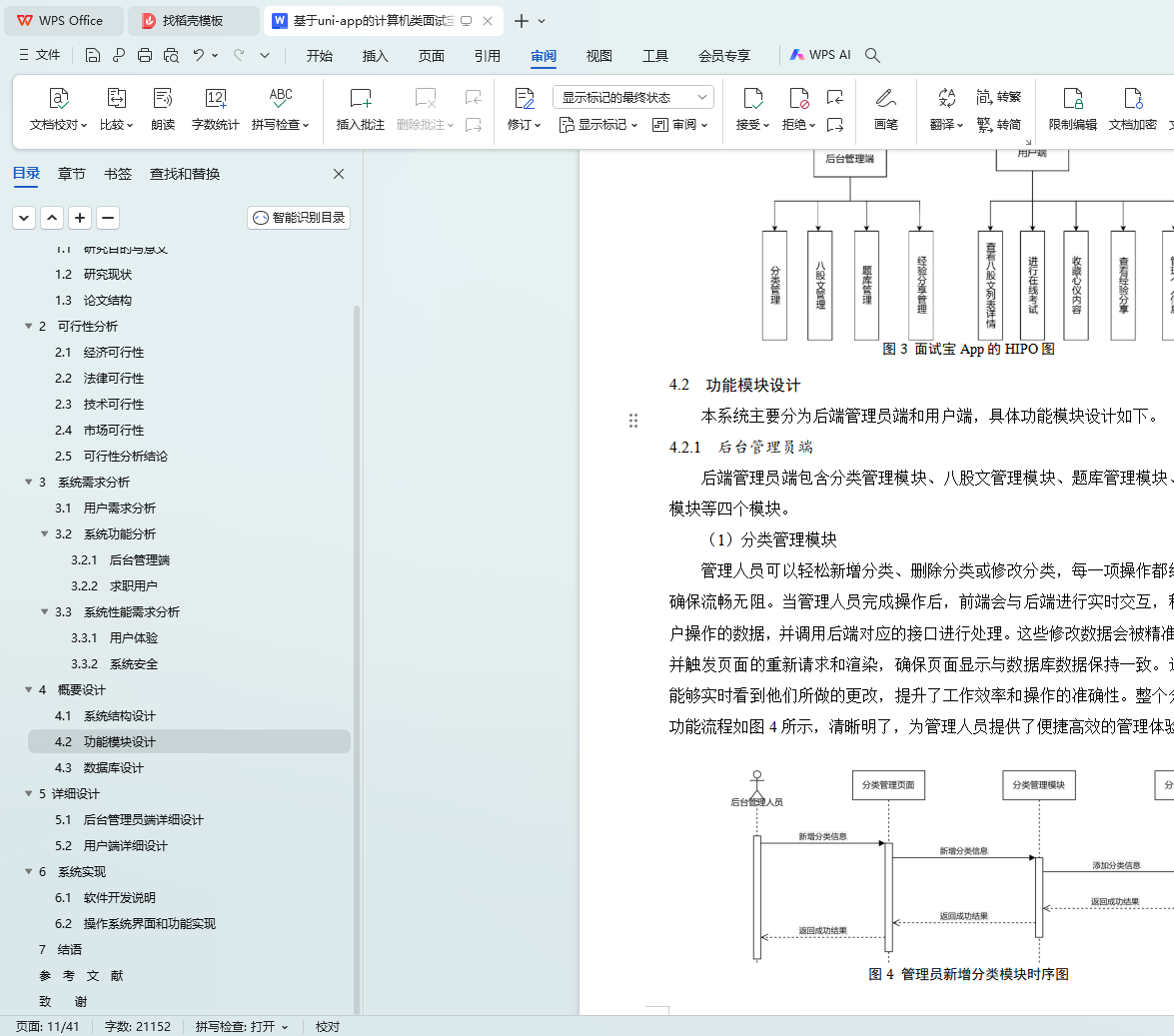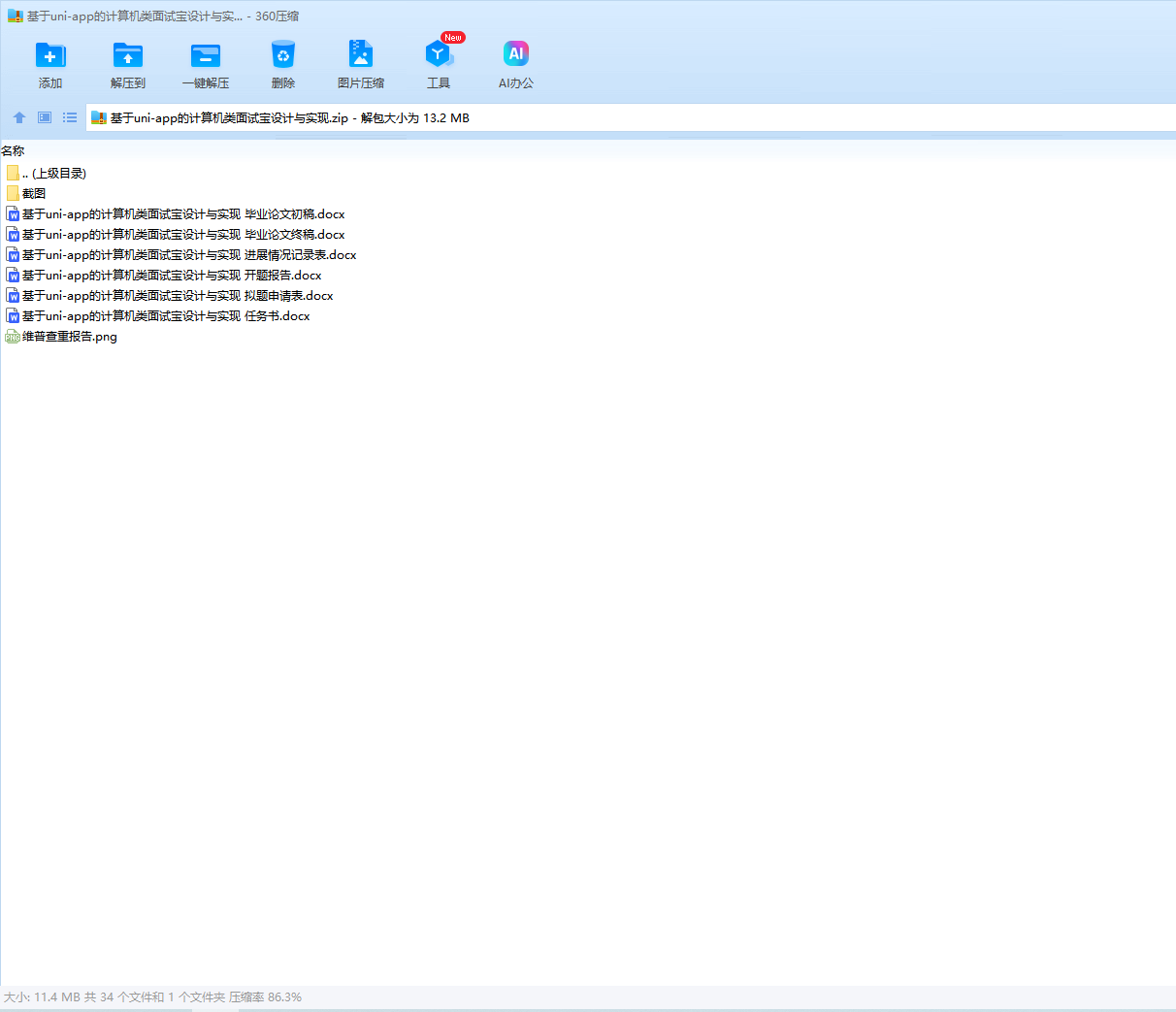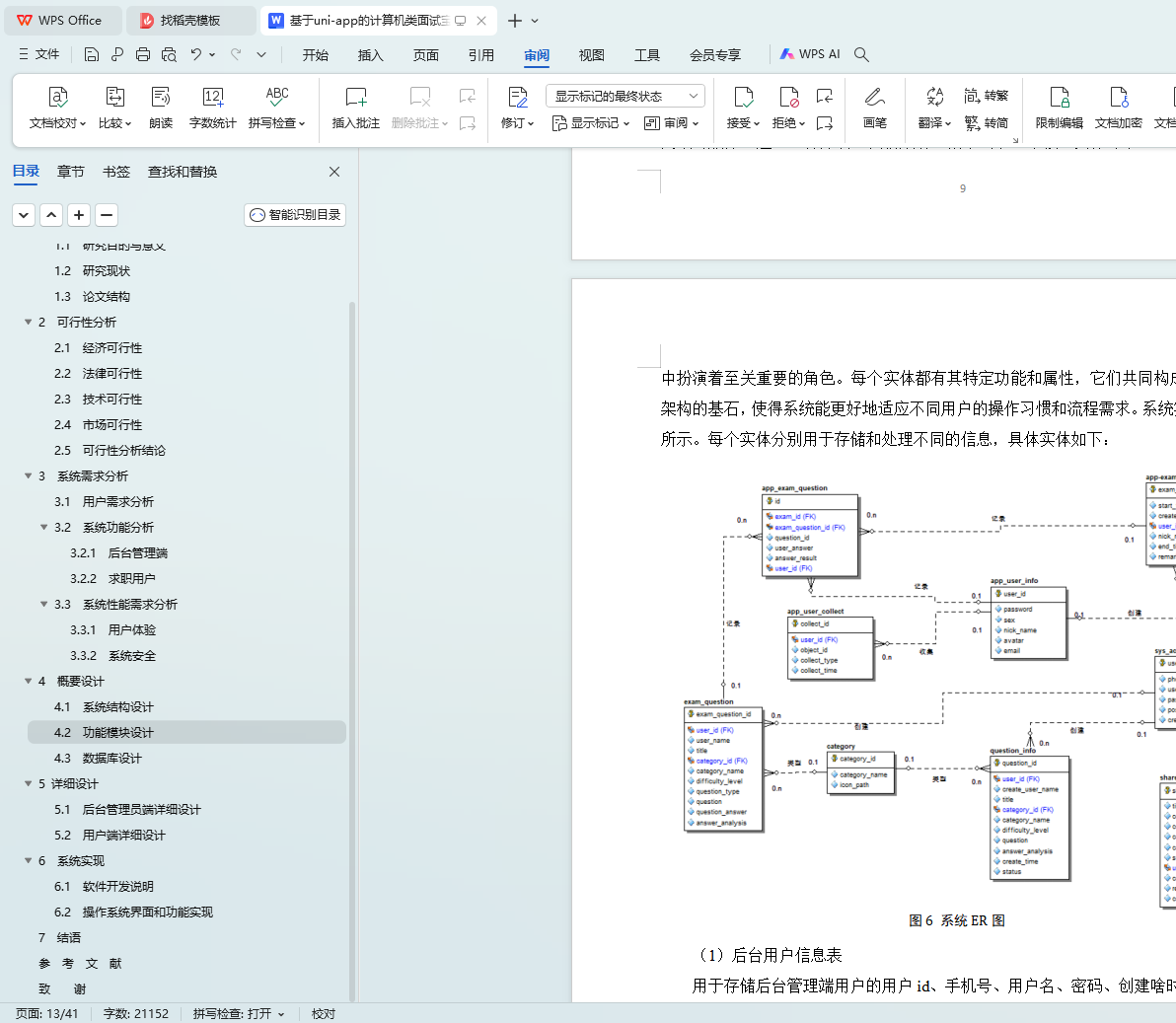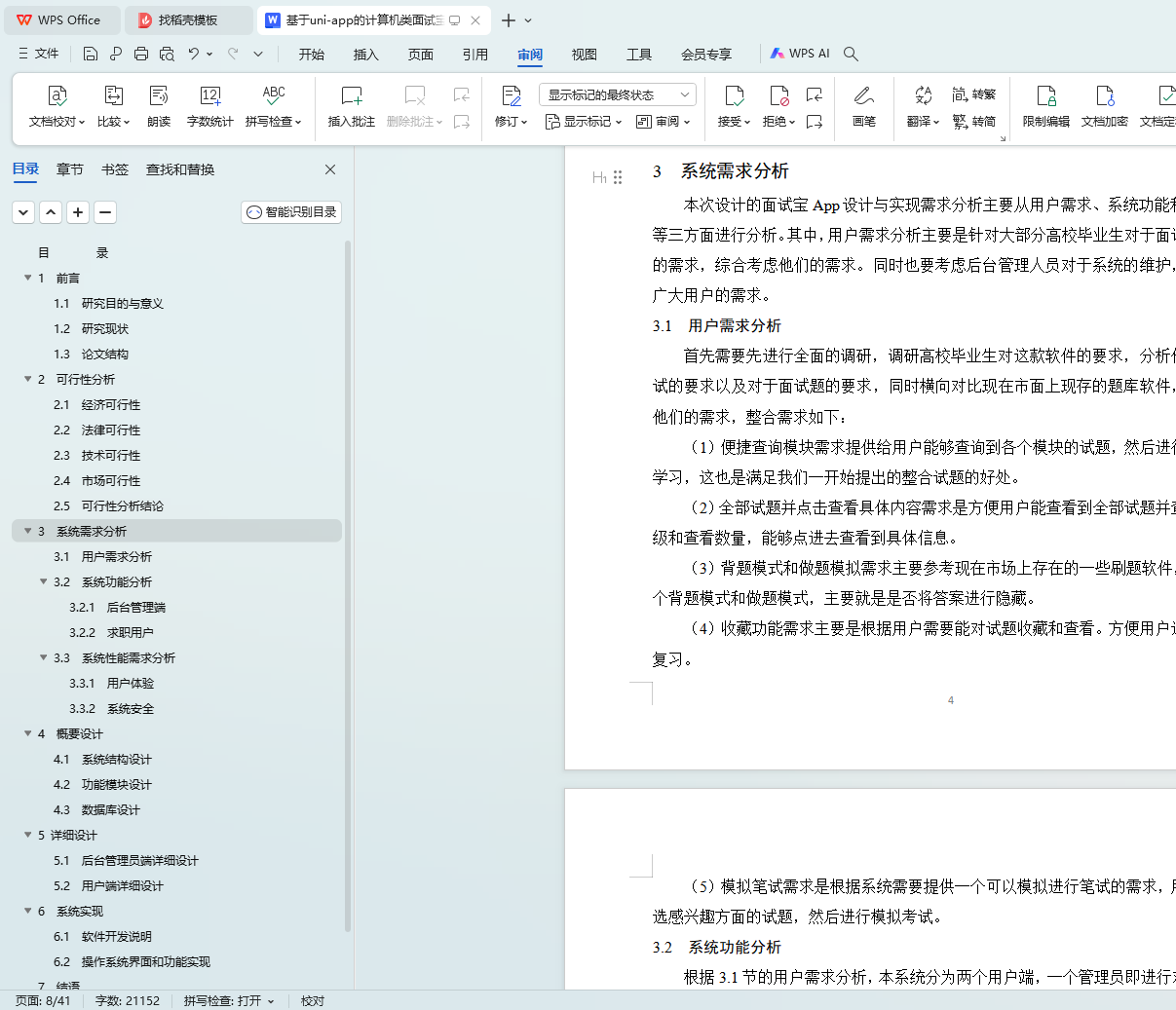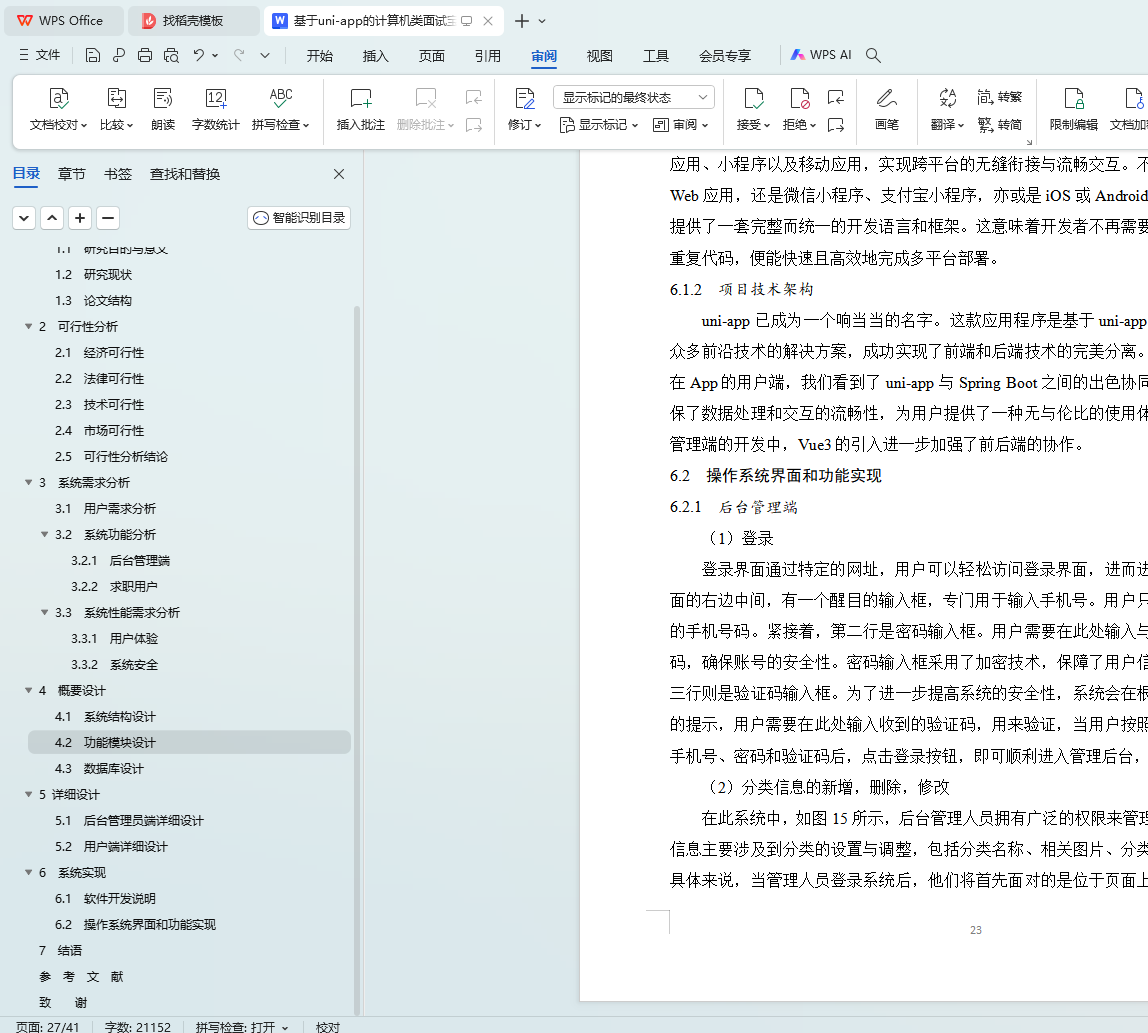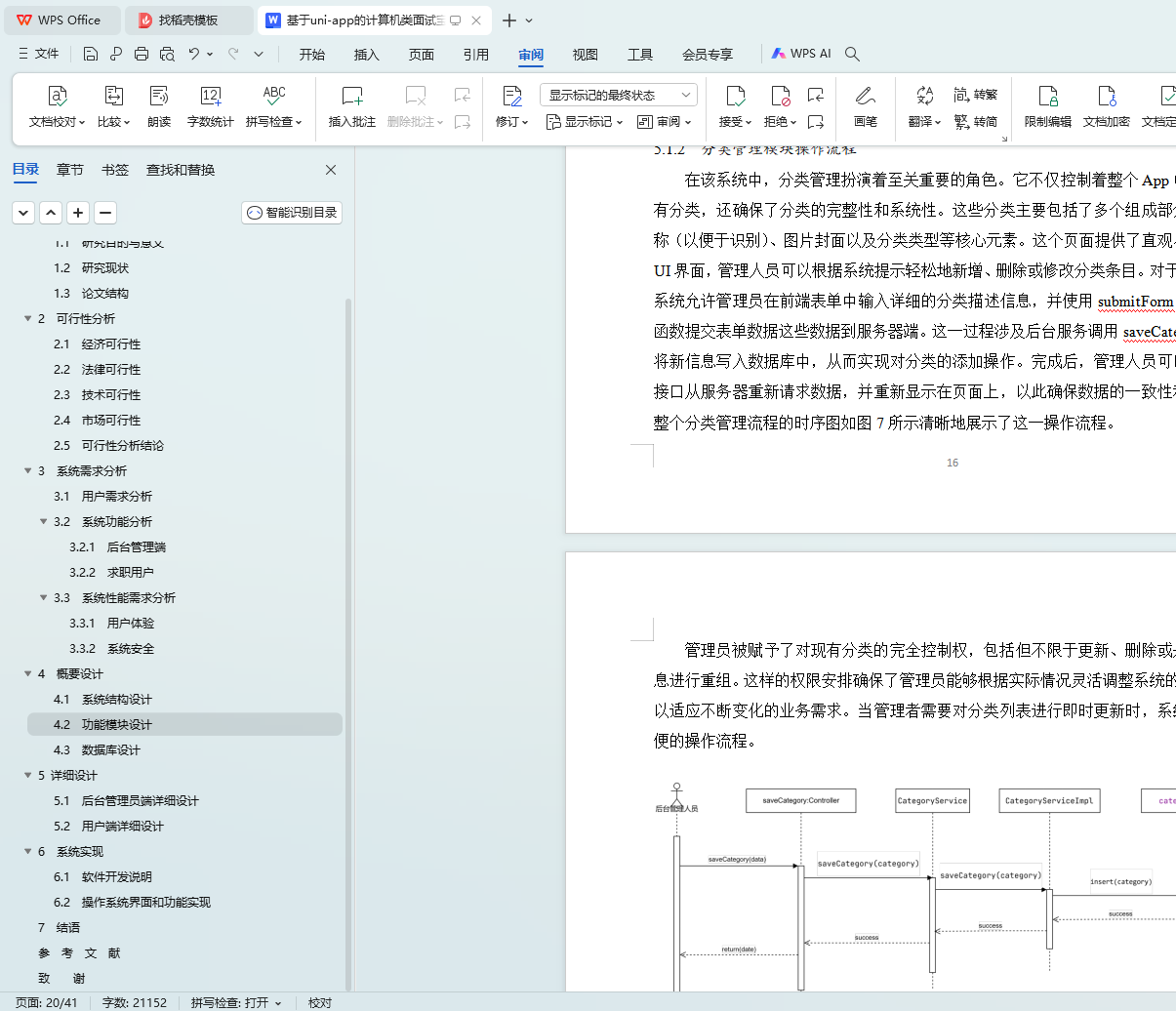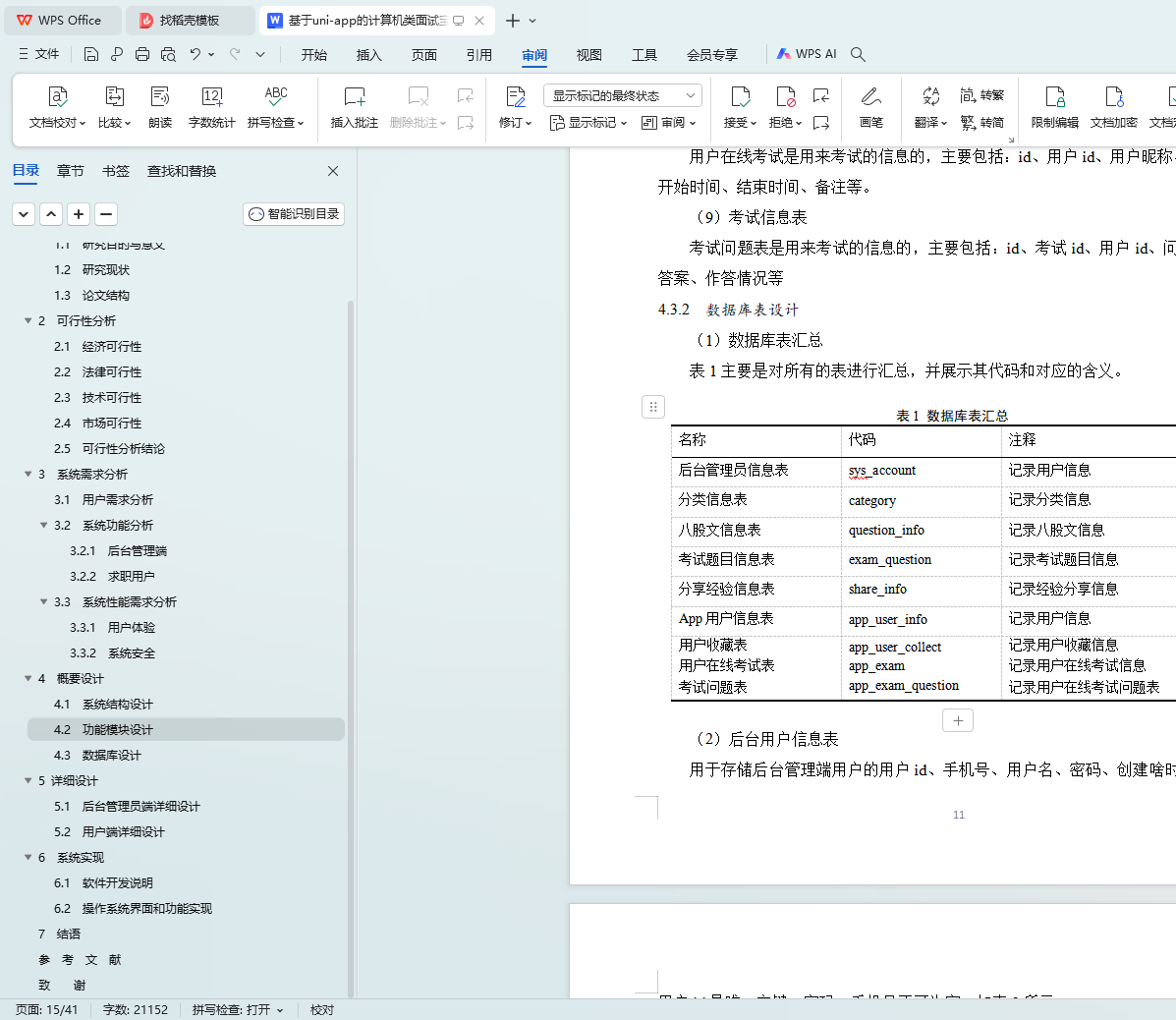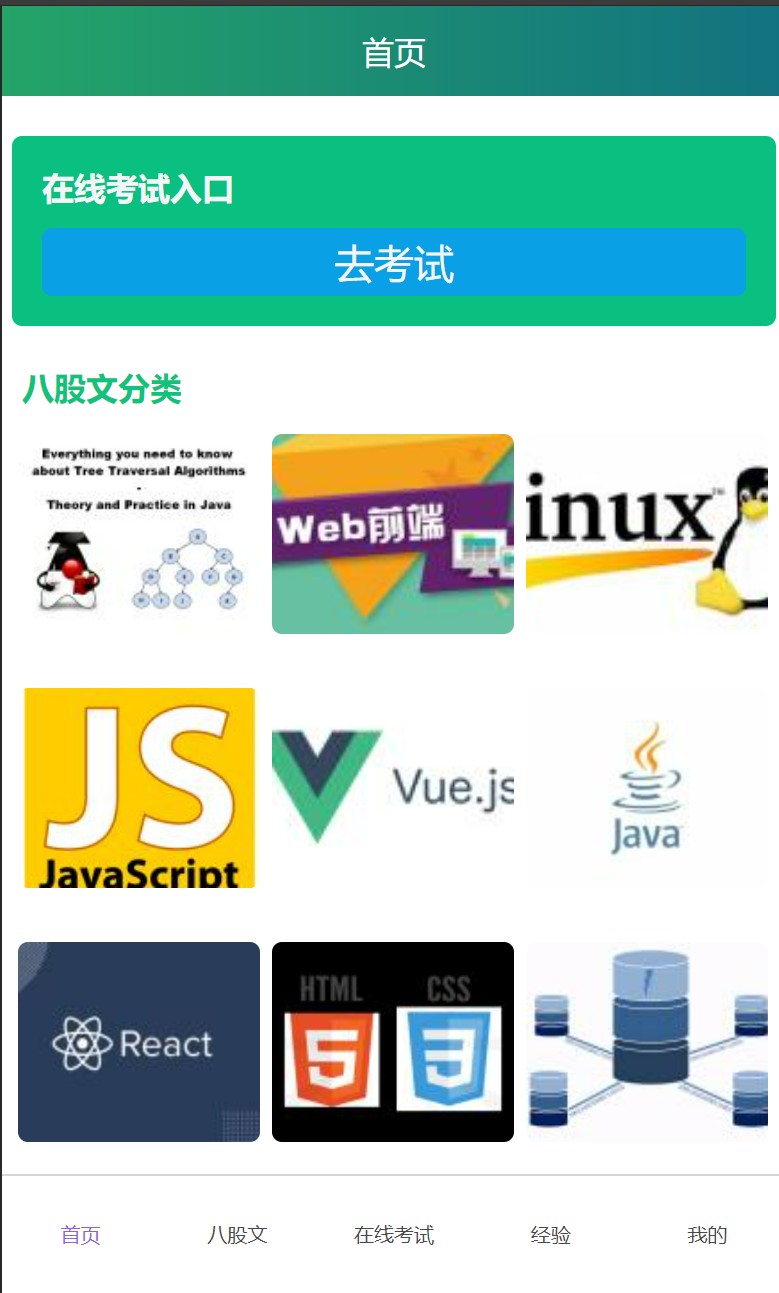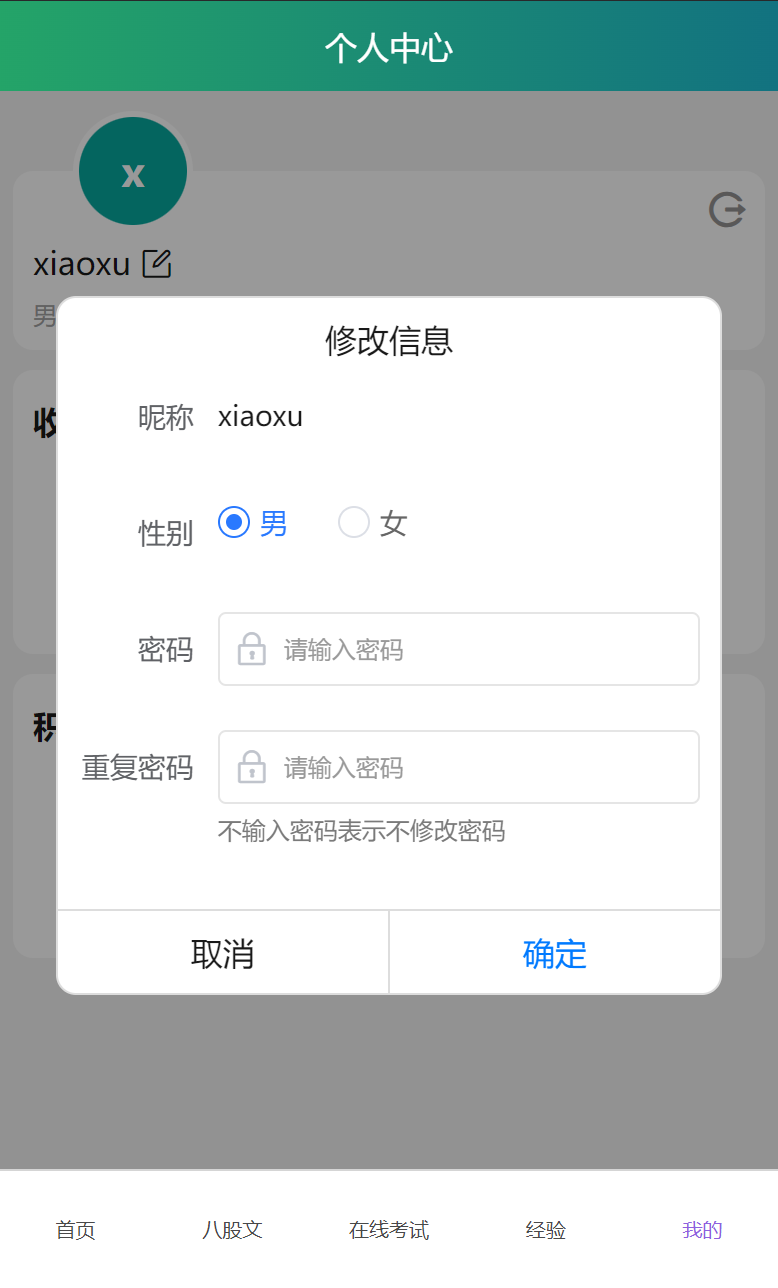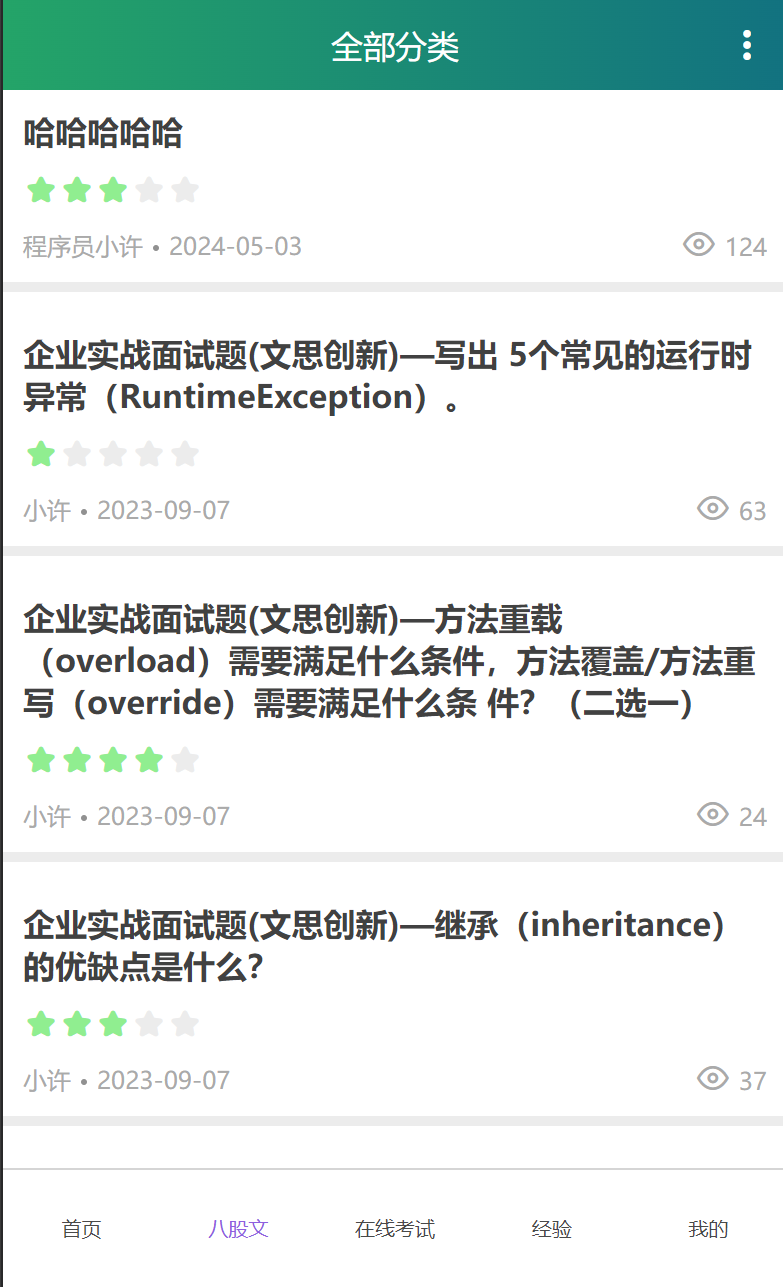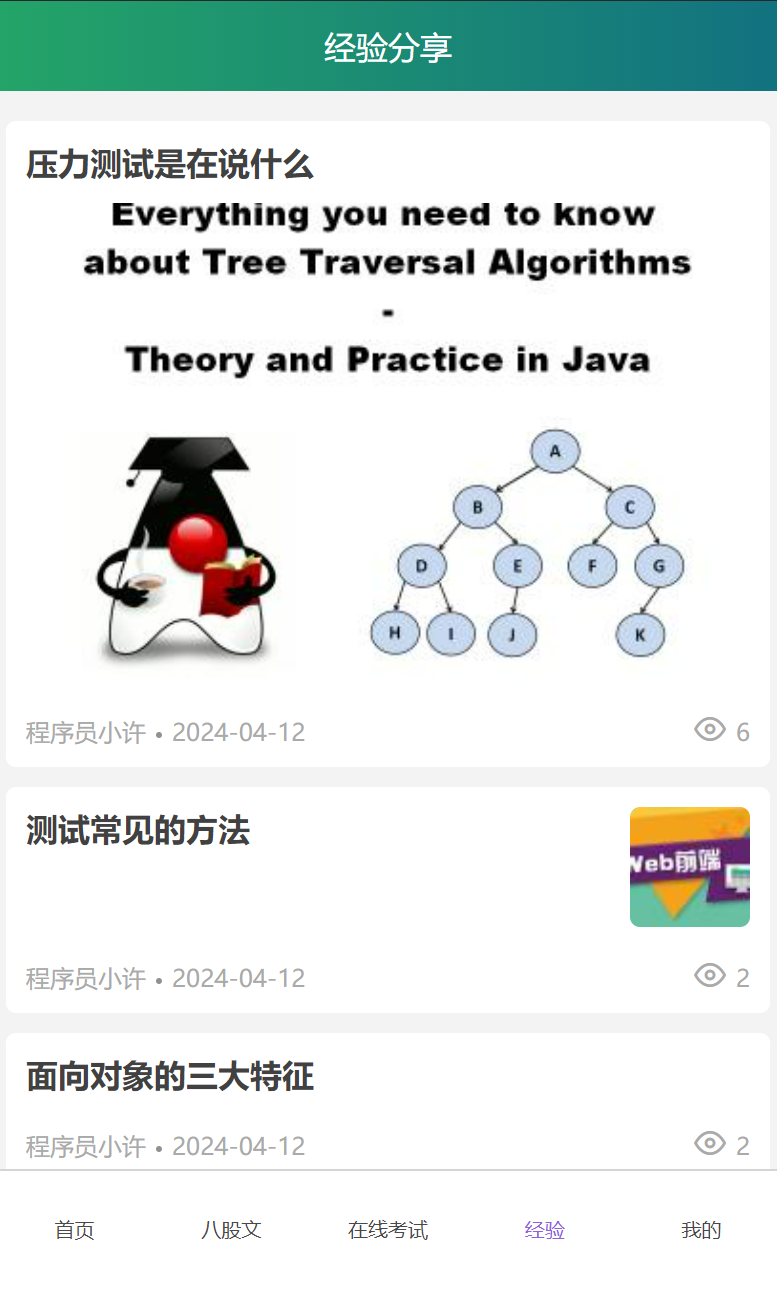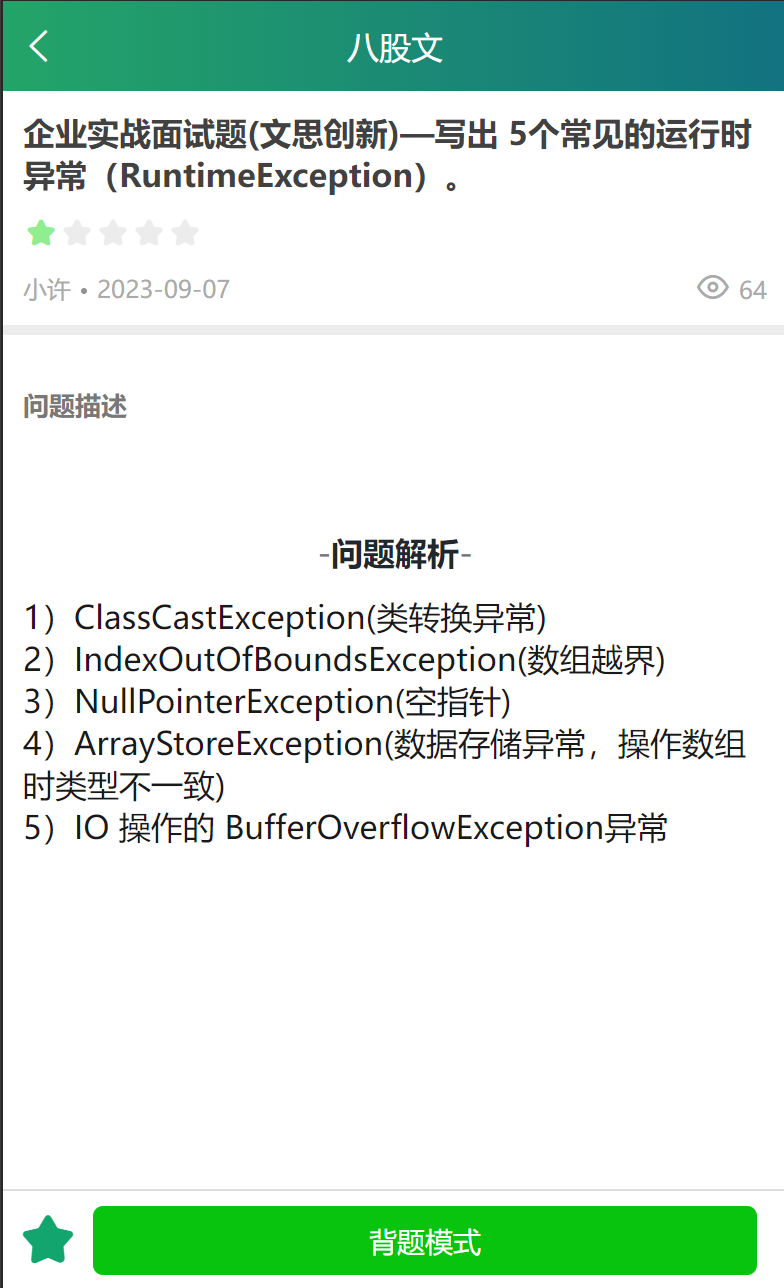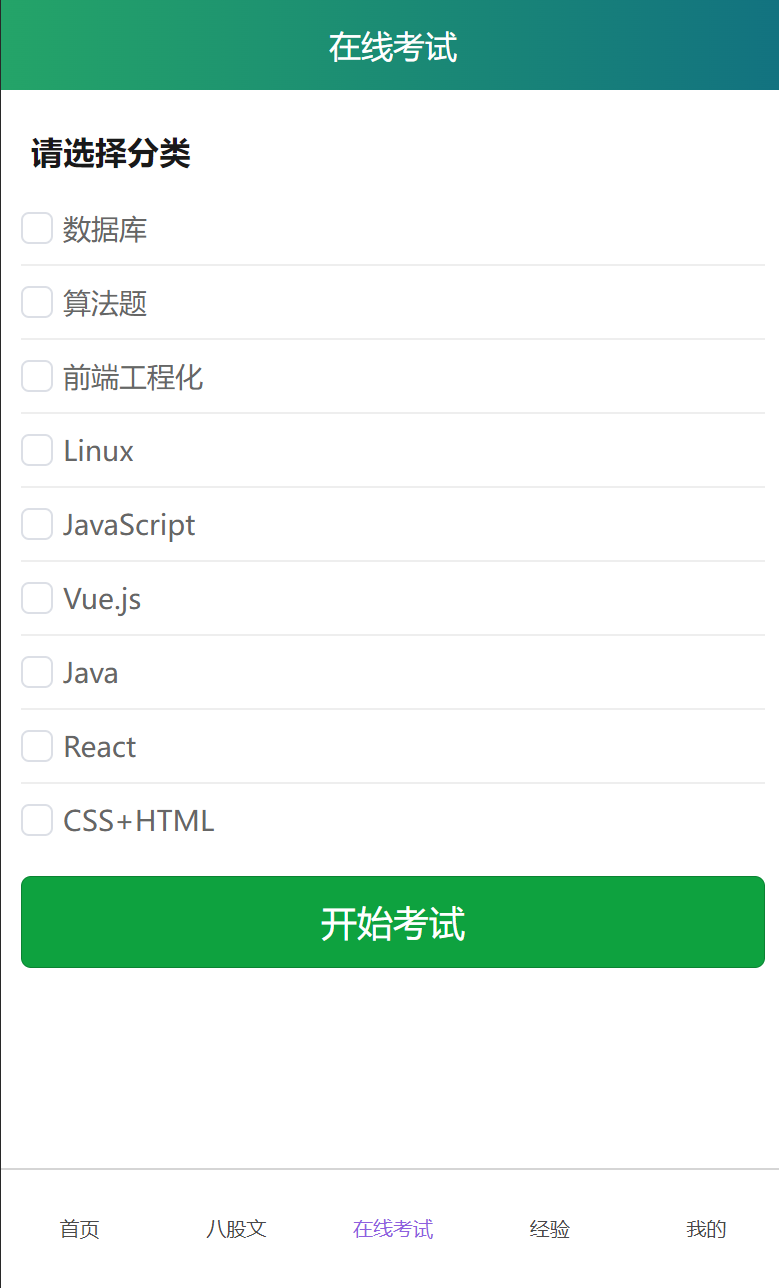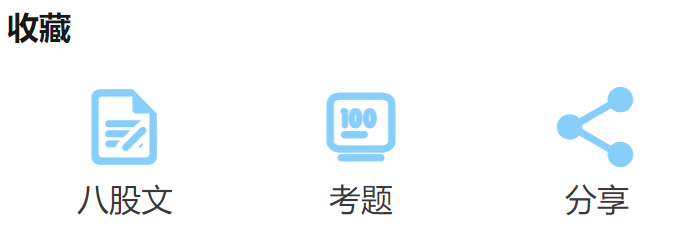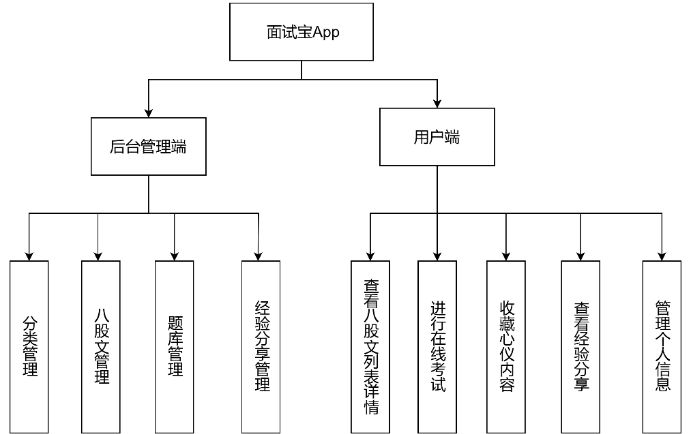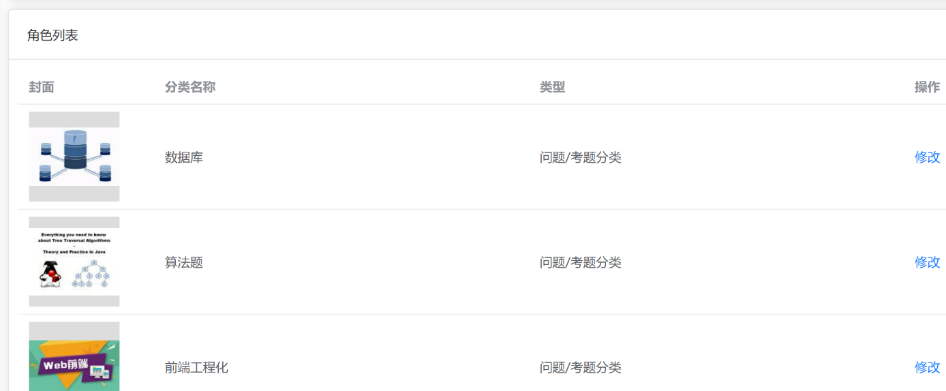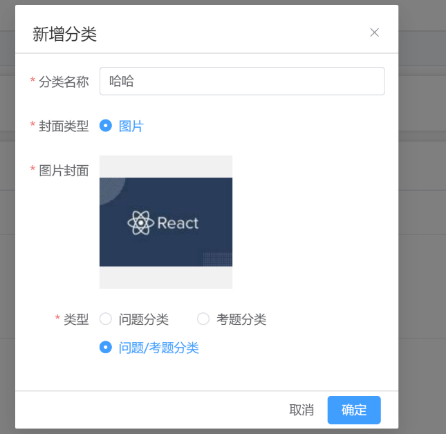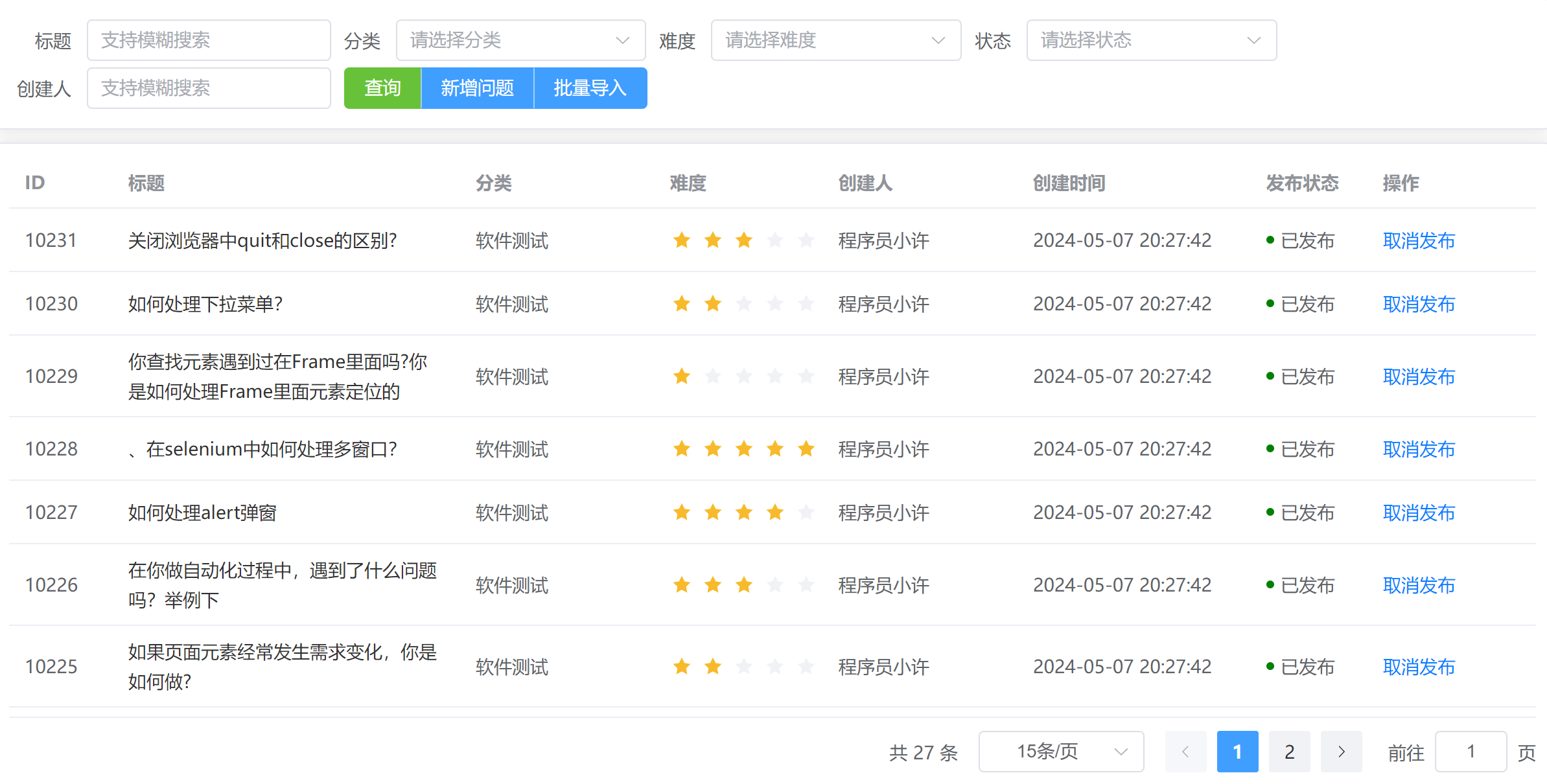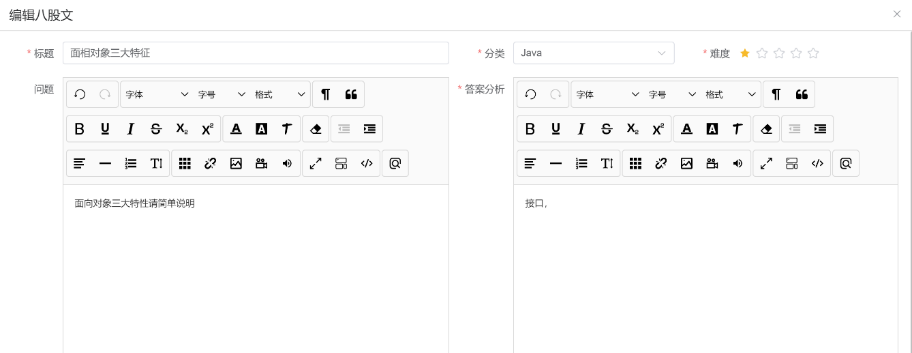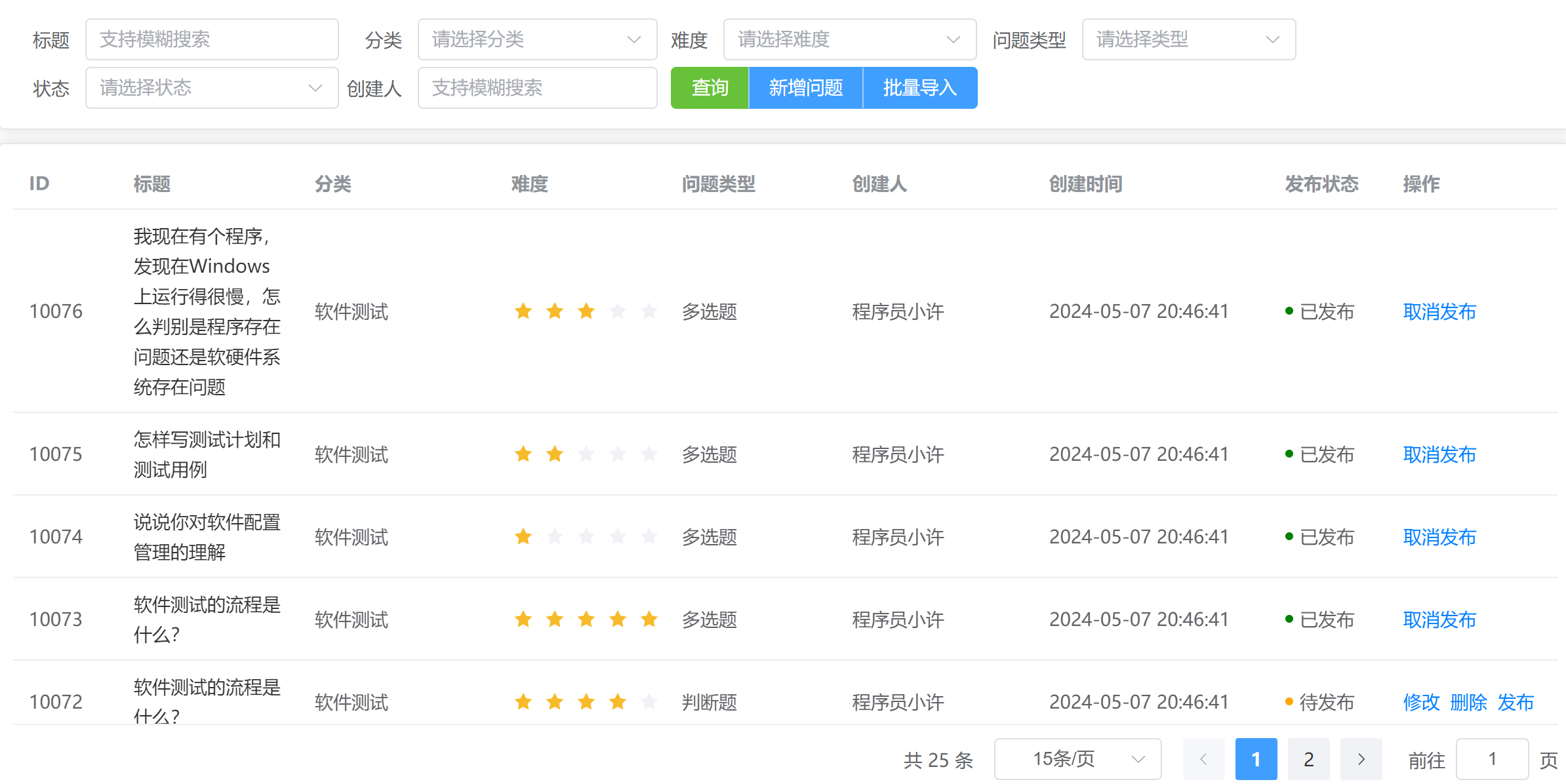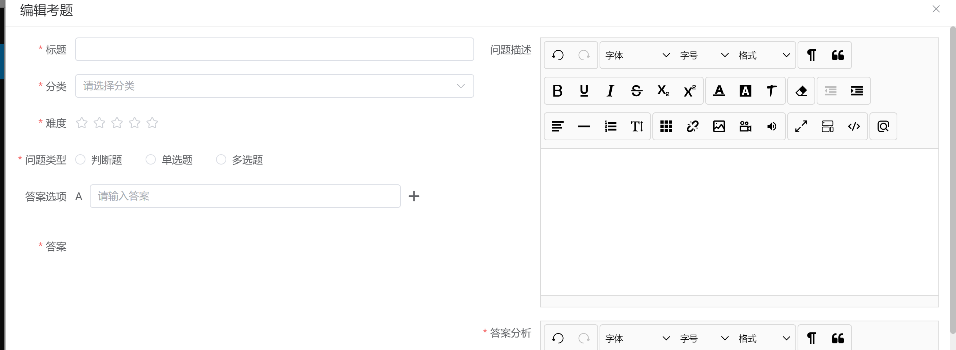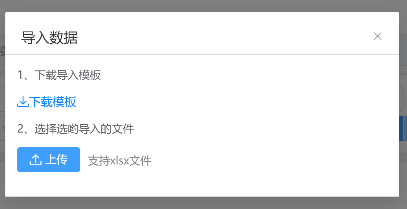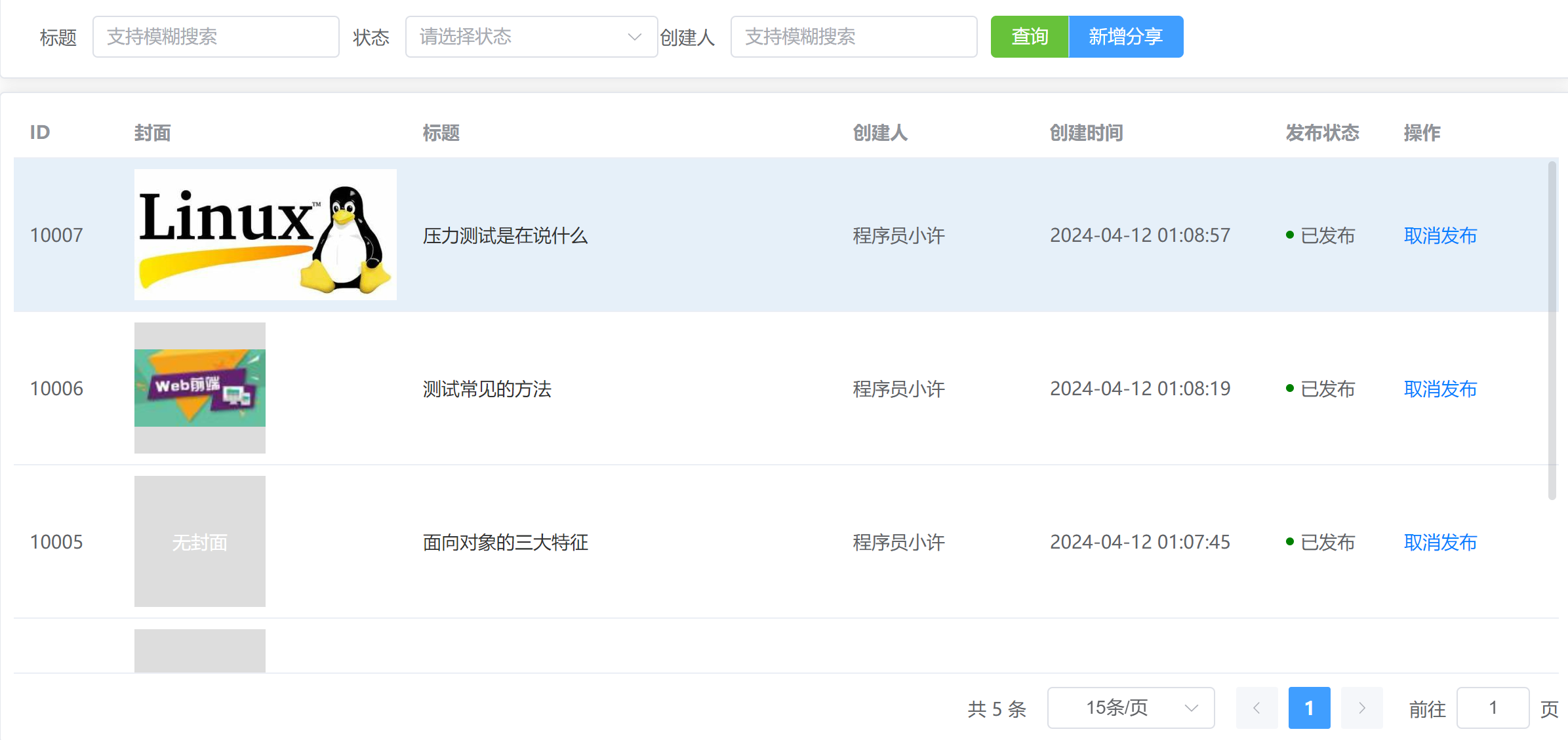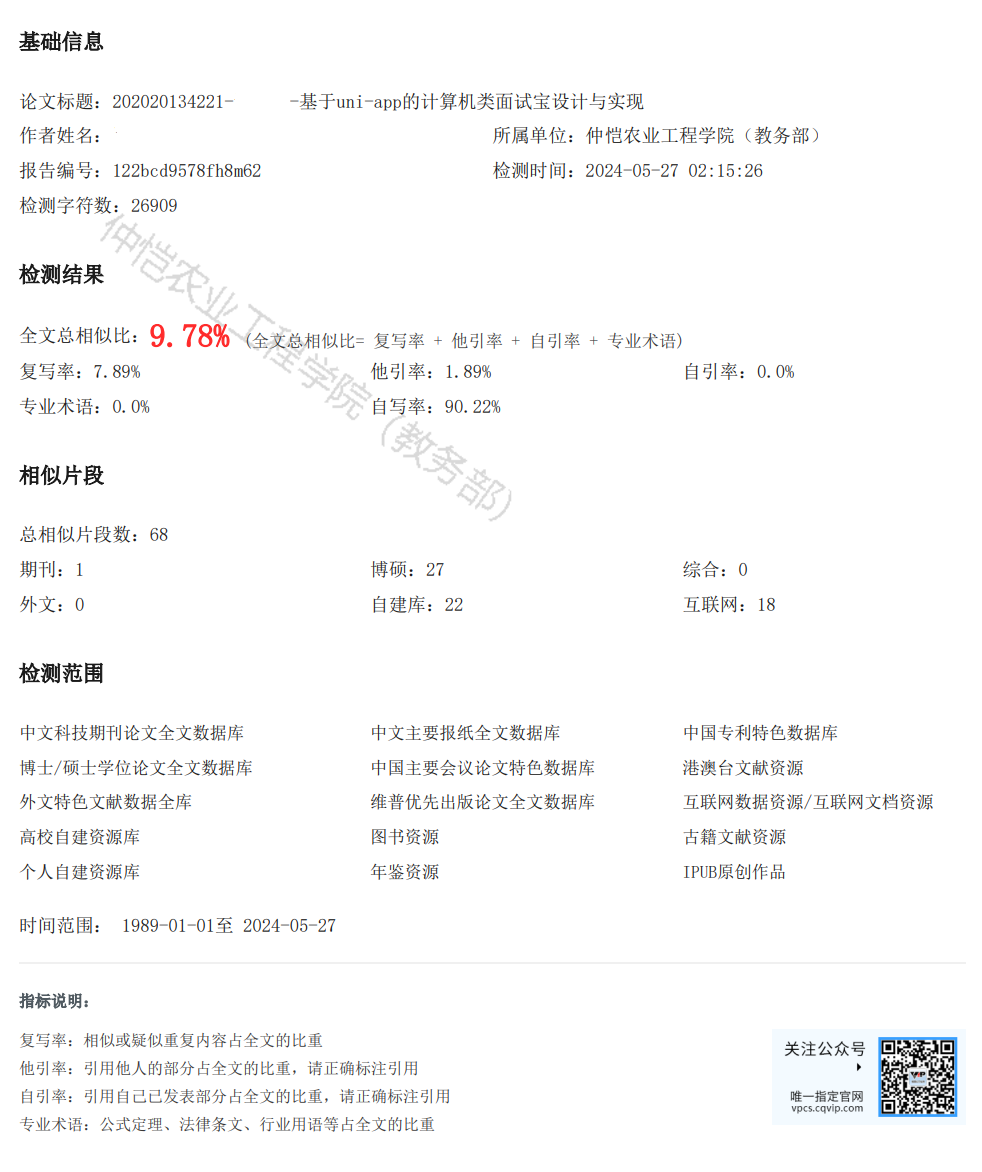基于uni-app的计算机类面试宝设计与实现 毕业论文终稿+初稿+拟题审批表+任务书+开题报告+进展情况记录表+维普检测查重报告
摘 要
笔试和面试是大学生就业的关键环节,是雇主评估申请者能力和适应性等能力的考察。尽管网上有许多共享的笔试题和面试经验,但信息分散,缺乏整合,使得大学生需花费大量时间搜集资料。本文开发了一款名为“面试宝”的App软件,该软件采用Spring Boot框架开发进行后端开发,并结合Vue.js和uni-app框架进行前端开发。本文首先采用UML统一建模语言对系统业务流程进行了详细的需求分析、概要设计与详细设计。系统提供了查看八股文列表,查看八股文详情,收藏和查看收藏,在线考试等功能,为广大学生提供一个全面且系统的学习资源,集合了丰富的笔试题库和面试经验分享。通过本系统,学生可以随时随地进行学习,深入了解各类题型和面试技巧,学生可以在真实的考试环境中进行模拟练习,从而更好地适应实际面试的节奏和压力。
关键词:笔试模拟;面试经验分享;uni-app;Vue;Spring Boot
Abstract
The written test and interview are crucial steps in the employment of college students, and they are the assessment of the applicant's abilities and adaptability by employers. Although there are many shared written test questions and interview experiences online, the information is scattered and lacks integration, which requires college students to spend a lot of time collecting information. This article developed an app called "Interview Treasure", which uses the Spring Boot framework for backend development and combines Vue.js and uni app frameworks for frontend development. This article first uses UML unified modeling language to conduct a detailed requirement analysis, summary design, and detailed design of the system business process. The system provides functions such as viewing the list of eight part essays, viewing the details of eight part essays, bookmarking and viewing bookmarks, online exams, etc., providing a comprehensive and systematic learning resource for students, collecting a rich written test question bank and sharing interview experiences. Through this system, students can learn anytime and anywhere, gain a deeper understanding of various question types and interview techniques. They can also engage in simulated exercises in real exam environments to better adapt to the pace and pressure of actual interviews.
Key words: Written test simulation; Interview experience sharing; uni-app; Vue; Spring Boot
目 录
